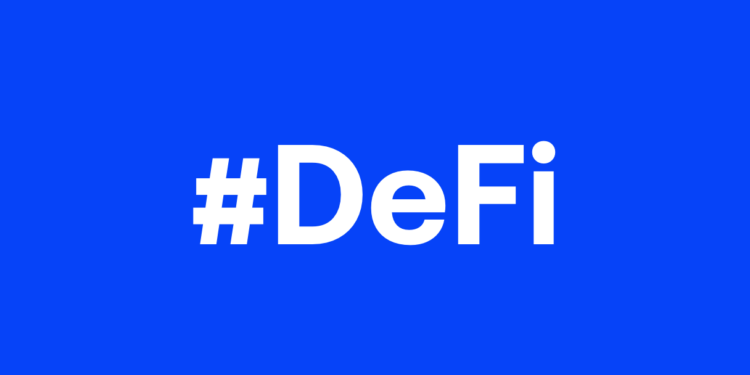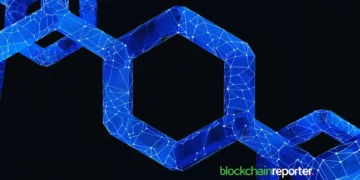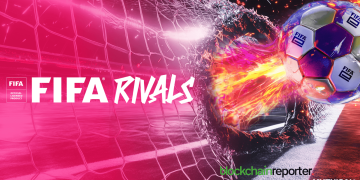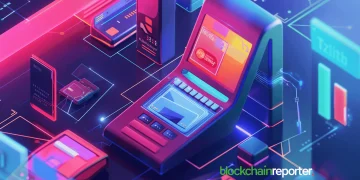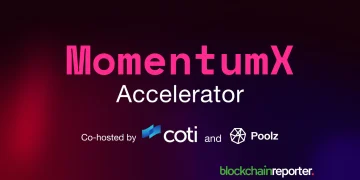After a difficult bear market, the tides are now starting to turn back in favor of blockchain and DeFi. In fact, based on the current rate of adoption, experts are predicting that one in every two people will be using Web 3 systems by 2023. Despite this long-term projection, the blockchain community is currently bustling with new projects, exciting launching, and innovative features.
On this list, we’ve collected ten of the most disruptive DeFi projects, each of which is actively pushing the bounds of their specific field. Across all these projects, we’ve focused on those that have the most exciting roadmaps for 2023, selecting names that have begun to make waves in this community.
We’ll be covering the following promising DeFi projects:
- AAG – Building the Future of Blockchain for Developers and User Access
- Pendulum – Bringing Fintech to Web 3 and Innovating the Forex Industry
- DJED – The Stablecoin That Will Change the Trajectory of the Cardano Ecosystem
- Boba Network – Layer 2 Scaling Solution That Is Set to Bring Lightning-Fast Transactions and Interoperability Across Web 2 and Web 3 Systems
- RSK – The World’s Leading Smart Contract Platform for Bitcoin
- Sweat Economy – Using Blockchain to Revolutionize the Wellness Industry
- SubQuery – Bringing Decentralized Data Analysis Tool to Every Web 3 System
- Holograph – Driving Web 3 Creativity with Omnichain Tools
- Peer – Building the Technology, Software, and Ecosystem of the Metaverse
- Metacade – Innovating GameFi To the Next Level
Let’s dive right into it.
AAG – Building the Future of Blockchain for Developers and User Access
AAG is a Web 3 infrastructure platform that aims to bring new utility software to the world of blockchain. Their goal is to create distinct software solutions that help to simplify interactions between users, blockchain, and the Metaverse as a whole. By 2030, they want to bring 1 billion people into the Metaverse economy.
Out of all of the software solutions that they offer, the recently announced MetaOne crypto wallet is by far one of their most groundbreaking releases. The MetaOne wallet acts as an all-in-one Web 3 wallet system, allowing absolutely everyone to get involved in this new iteration of the internet.
Whether you want to send an NFT from one wallet to another, want to check in on the progress of a range of Web 3 projects, or simply want to connect to a dApp, MetaOne has you covered. With a simple and secure sign-up portal, users are able to enter into Web 3 with familiar architecture, reflecting many Web 2 sign-in structures that only need one account.
On a singular MetaOne account, users can access limitless blockchain opportunities across any dApp or Web 3 deployment that they’d like. This concentrated location for all things Web 3 also means that users can store their crypto and NFTs in a single account, helping to radically increase user access to these digital assets.
The MetaOne wallet solves all of the major issues in modern Web 3 wallet providers. Other wallet providers have been critiqued for weaknesses in security, offering a poor user experience, or being tied to one blockchain. MetaOne surpasses all of these faults, providing an intuitive platform with world-class security and complete interoperability across all blockchain providers.
What’s more, AAG has also recently announced its Saakuru blockchain. This blockchain ecosystem is ready to be one of the fastest ever made, ensuring that developers and users can access a system without the need for gas fees. From a developer standpoint, this dismantles one of the largest barriers that are faced when creating a dApp, with the lack of gas fees speeding up both usage and adoption of a new platform.
This new blockchain will help companies enterprise into Web 3, providing the perfect conditions for rapid growth. Its ability to integrate with the MetaOne wallet acts as a further set of benefits for this new system, with AAG having covered all of their bases – so to speak.
Beyond just creating software solutions, AAG is a champion of sharing knowledge in the world of Web 3. For anyone that wants to learn more about blockchain, the Metaverse, or the fundamentals of cryptocurrency, they offer the AAG Academy. This is a user-friendly space where people can learn about these concepts without difficult jargon.
AAG is building toward total adoption, providing educational pathways for users and software solutions for developers. Without a doubt, this is one of the most promising projects of 2023, with the impact they’re currently making on the industry creating ripples that touch every corner of blockchain.
Pendulum – Bringing Fintech to Web 3 and Innovating the Forex Industry
Pendulum is a smart contract blockchain network that offers composable fiat services that help push Web 2 fintech companies into their DeFi future. At the core of Pendulum, this project attempts to act as the link between DeFi and fiat, by providing a fiat-optimized blockchain. They do this by creating utility for fiat currencies, allowing fintech services to transform their offering for Web 3 audiences.
Typical financial services like forex, savings accounts, and trade financing are incorporated into this Web 3 environment, with forex AMMs, yield farming opportunities, and lending opportunities closely mirroring the available fiat finance opportunities. Each of these new utilities is directly created so that everyone has access to a more open financial future, going beyond borders and fostering complete economic inclusion.
Pendulum is built on Polkadot’s Substrate framework, chosen specifically for its high degree of interoperability. With Pendulum’s business focus, interoperability will be vital, providing an ecosystem in which Web 2 companies can rapidly make the transition to Web 3. Considering the speed, limitless potential, and ability to scale, DeFi is the perfect ecosystem to welcome a new wave of financial products into a new generation of fintech.
Another core offering of Pendulum is bringing forex to the world of decentralized finance. At present, over $6.6 trillion USD equivalent is trading on foreign exchange markets. Pendulum serves as one of the first projects that attempt to bring the large forex market into this decentralized space, with their Forex AMM being on their roadmap for Q1 of 2023.
Recently, Pendulum was in the news due to the promise of what bringing forex to DeFi would mean for blockchain as a whole. On Polkadot’s young network, Pendulum ended up securing a parachain crowd loan in the fastest recorded time in the network’s history. Within just over an hour, Pendulum has received all the capital it needed for the loan, demonstrating just how fired up the blockchain community is around this project.
The main benefit of moving to decentralized finance from a forex trader’s perspective is that they would save fees that are absorbed by middleman services for trading. Via decentralized trading, individuals would be able to trade faster and directly, cutting out middlemen and increasing global profits from this industry.
Pendulum is an incredibly exciting project that has a lot of big features lined up this year. Without a doubt, Pendulum is a project to keep a close eye on as they begin to achieve and publish more of their 2023 roadmap.
DJED – The Stablecoin That Will Change the Trajectory of the Cardano Ecosystem
DJED is Cardano’s new stablecoin, which has released in January of 2023. At its core, DJED is a stablecoin that’s pegged directly to the value of the US dollar. It was first announced all the way back in 2021, during the Cardano Summit. The stablecoin has been developed by COTI, which is the world’s first platform that specializes in the creation of price-stable coins.
COTI and Cardano have worked together on the stablecoin, with the final product benefiting both companies. All of the transaction fees on the Cardano ecosystem will be paid in DJED. The uniformity of this price will directly work against the one-unstable gas prices that the network was prone to. For the 40+ apps on the Cardano network, this ensures a level of stability for customers that were previously inaccessible.
What’s more, the stablecoin will also be used for lending, regular payments, and remittance, creating a new pillar in the Cardano ecosystem. DJED operates as a decentralized back, being over-collateralized and then backed by a selection of other tokens, SHEN and ADA. With this reserve base, DJED will have a much easier time being pegged to the US dollar and holding its value.
As a new project that’s launching into this space, some investors expressed worries about the stability of the coin itself, citing the LUNA disaster of last year as an example of things going wrong.
In response, COTI has made sure that beyond just being collateralized with ADA (Caradno’s native token), DJED also has between 400-800% in SHEN as collateral. This ensures that there are several backups and solutions if any one of the currencies were to suddenly fall in price. The multiple layers of security make this a highly-secure stablecoin, and one that cannot fall into the same category as LUNA.
As an impressive launch into this space, DJED has the whole blockchain community talking. They have also released more information about liquidity within their ecosystem, with one developer who worked on the project stating, “We are aiming for at least a 10%-15% farming APR for both the pairs ADA/$DJED and ADA/$SHEN. So, in total, we are aiming to be above 20-25% APR in the first month to attract liquidity.”
With an impressive strategy in place, the DJED stablecoin could be the factor that revolutionizes the Cardano ecosystem, bringing it back into the running as one of the world’s most prominent blockchain systems.
Boba Network – Layer 2 Scaling Solution That Brings Interoperability Across Web 2 and Web 3 Systems
The Boba Network is a Layer 2 scaling solution that effectively solves two of the major issues that plague many modern blockchain ecosystems: a lack of interoperability and high gas fees. Despite being a world-class blockchain system that’s great for developers, Ethereum’s high gas fees have been its Achilles heel.
As a Layer 2 system, the Boba blockchain directly connects to systems like Ethereum, lending them its core offering. Boba is able to radically improve the performance of a L1 system, increasing throughput by up to 100x current speeds. With a higher TPS, Boba is able to reduce the gas fees that a blockchain has to charge, fixing one of the major problems that currently face Ethereum and a number of other leading chains.
Additionally, Boba allows developers to construct directly on Boba, choosing from a multichain system for different Layer 1s. This allows developers to create the perfect environment for their project, helping to usher in a new era characterized by rapid dApp development cycles. Currently, Boba is the only main-chain L2 that’s live on Ethereum, Moonbean, BNB Chain, and Avalance.
It also offers full support for NFTs, with users and developers being able to bridge to and from Boba with ease. That means that a user could mint an NFT on Boba, then bridge it to a L1 system that they want to house it on. With the extremely low gas fees that Boba offers, this could revolutionize the NFT industry and set it back on track for 2023.
Unsurprisingly, InvestorsObserver has given the Boba Network a “Very Bullish” rating, demonstrating the faith that investors and developers have in this project. Even without additional features, the central offering that Boba creates for developers and entire blockchain systems is currently unmatched across this industry.
What’s more, the Boba Network has released its Hybrid Compute technology. This feature allows Web 3 developers to poll Web 2 APIs, receiving information from already-established Web 2 systems and porting it directly into Web 3 applications. This can pave the way for a number of innovative Web 3 projects.
As its most simple, Hybrid Compute could take weather data from Web 2 and push it over to a Web 3 weather channel service. At its most complicated, Hybrid Compute allows developers to pull in enterprise data from Web 2 systems, leveraging an off-chain system so that Web 3 developers can use any information that would have been available to them in Web 2.
Hybrid Compute is one of the most advanced tools that have come out of the Web 3 space, and will serve as a key component of many of the leading projects of the future. Without a doubt, if there’s a project on this list that you should be paying close attention to, it’s the Boba Network.
RSK – The World’s Leading Smart Contract Platform for Bitcoin
Originally founded in 2016, RSK has had an explosive few years, rapidly developing the first smart contract platform that’s secured by the Bitcoin network. RSK is actively shaping and transforming the way that Web 3 businesses are designed and built, with its RSK Infrastructure Framework Open Standard (RIF OF) helping scale technologies with decentralized architecture.
RSK allows businesses to code and digitally record transactions on Bitcoin, accessing autonomous, self-sufficient, and trustless smart contracts. Beyond just recording these onto Bitcoin, RSK can scale up to 100 transactions per second, without having to sacrifice any element of its decentralized network.
As of early 2019, RSK is the most secure smart contract platform in the world, and has achieved a hashing power of over 35%. Their innovations didn’t stop there, being one of the first projects in 2020 to create an interoperable bridge with Ethereum. Across ETH and RSK, users are able to send tokens back and forth thanks to their shared mint-and-burn mechanism. This is one of the earliest steps that was taken in order to connect Bitcoin and Ethereum, the two most prominent blockchain networks.
For developers, the ability to join the Bitcoin ecosystem through building with RSK is one of the biggest advantages of this system. Bitcoin has nearly-impenetrable security, with the fact that RSK has access to this secure environment being a factor that many developers prioritize above all else.
At present, there are over 45 dApps that are built using this platform, with over $60.185M USD locked into the platform. These systems are actively working to bring more users to their platforms, with over 68,000 monthly transactions currently occurring. RSK offers to take Bitcoin to the next level, helping it to further break into the dApp market.
As of January 19th, 2023, RSK received a bullish rating from InvestorsObserver, with the fundamentals of this project being some of the best in the industry.
Bitcoin certainly isn’t going anywhere. And, with the help that RSK affords it as the world’s leading smart contract system, RSK is also here for the long run. We cannot wait to see what more 2023 has in store for this fantastic Web 3 infrastructure project.
Sweat Economy – Using Blockchain to Revolutionize the Wellness Industry
SweatEconomy started all the way back in 2015, being launched as a free application, SweatCoin, on the iOS store. The application rewarded users for walking, with every step being converted into an in-app currency. With this currency, users could buy gift cards, products, and get access to lots of deals that SweatEconomy procured for their users.
The application instantly took off, with millions of people around the world wanting to be rewarded for the steps that they took each day. Over the last few years, SweatCoin has blown up into one of the most successful applications of all time, being 2022’s number 1 Health and Fitness app and reaching #1 in 58 separate countries.
Since then, Sweat Economy has added a Web 3 app, rewarding users with cryptocurrency, SWEAT, for their steps. Users of the Web 2 app simply need to download the Sweat Wallet app to begin to collect their new cryptocurrency rewards. These coins can similarly be spent in the Sweat Economy shop, or traded on a DEX for USD or other fiat currencies.
SweatEconomy has revolutionized the world of exercise, motivating over 120,000,000 users to start to take their health more seriously. Providing a financial incentive for moving, they push people to get more steps in during the day, helping them to create healthy habits over time. With each 1k walked resulting in one $SWEAT, users are readily partaking in the “Move to Earn” economy.
Sweat Economy has done so well because of its ease of access. You don’t need any complex tools, you don’t need to complete any difficult tasks, you don’t even need to understand what cryptocurrency is – all you need to do is walk.
Within the Sweat Economy app, users can also put their $SWEAT tokens into what are known as Growth Jars. These are jars where you lock up your cryptocurrency for a certain period of time. These normally increase over 3-month periods, ranging anywhere from 3 months to a year. Each of these jars offers an annual yield, meaning that users can start to make passive income from their cryptocurrency.
Early in January of 2023, Sweat Economy once again took to the media, announcing their giveaway of a Tesla car. Celebrating 2.5M growth jars created on the app, Sweat Economy is giving back to its community as a display of gratitude after another groundbreaking year.
Sweat Economy is a genius concept that’s executed perfectly, with its fame across 60 countries clearly making this one of the most successful Web 3 apps ever. With over 100 million users, a global user base, and a concept that is intuitive to use, this app seems to tick all of the boxes. Be sure to closely follow this platform as they progress further into 2023, we’re sure they have some exciting projects up their sleeves.
SubQuery – Bringing Decentralized Data Analysis Tool to Every Web 3 System
Over the past decade, we’ve gone through a digital data renaissance. While data has always been important, the extent to which we can now draw insight from data and put it to use in all areas of business has made this field one of the most important in the world. It’s no surprise that data is now regularly called the most valuable resource we have available to us – with this remaining true for Web 3.
SubQuery has recognized this shift toward data-driven systems, and has constructed one of the world’s first Web 3 APIs for querying decentralized data. The sheer scope of data that Web 3 systems produce is causing companies to waste hour after hour on organizational tasks, not even to mention the enormous feat of them querying and drawing insight from said data.
SubQuery acts as the all-in-one solution, allowing Web 3 developers to build efficient, custom open-source APIs between Web 3 tools and the decentralized data they produce. This is a universal data indexing framework for Web 3, forming the foundation of many leading Web 3 and decentralized projects.
At present, SubQuery has managed over 21 billion total queries, boasting a 99.95% uptime over the last 90 days. With over 100 networks supported and 2,000 active testnet indexers, this is the comprehensive solution that developers have been waiting for. And, as we recognize just how vital controlling data is, the fantastic service that SubQuery offers will only grow in impact.
SubQuery has recently announced its Public Sale, which is now just on the horizon and will arrive after its Kepler launch. This public sale event has been highly anticipated, with the company offerings its users the ability to act as financial support and liquidity as they continue to build a world-class data management and querying system.
Their plans for 2023 don’t stop there, with SubQuery having created an extensive plan and roadmap for their launches in 2023. They plan to offer the widest chain support out of all data indexing platforms, including integrations with leading chains like Ethereum and other non-ETH chains. Beyond that, they’re constantly working on speed, ensuring developers can index and re-index blocks even faster than many thought possible.
Acting as one of the leading data-based Web 3 projects, SubQuery is a platform that we should all keep an eye on throughout 2023 and long into the future.
Holograph – Driving Web 3 Creativity with Omnichain Tools
The problem with minting digital assets like NFTs is that due to the sheer amount of singular L1 ecosystems, the process of minting a new asset can be fairly costly. On top of that, if a user wants to transfer that same asset from one digital ecosystem to another, they encounter a whole other set of restrictions and difficulties.
Holograph sets out to solve this problem, offering a omnichain digital asset infrastructure for the Web 3 ecosystem. Its core offering is the ability to create omnichain digital assets, which exist across all compatible blockchain ecosystems. With this, users are able to mint, buy, sell, bridge, create, and deploy digital collectibles across all of their favorite blockchains, and overcome the classic issues that assets like NFTs cause.
On the Holograph app, users can view and interact with their digital assets, with this system helping to further push what is possible for developers and users in terms of NFT and digital asset utility. Beyond just NFTs, the omnichain interoperability that Holograph offers will help to overcome liquidity fragmentation.
From this, developers will have fewer security risks, lower fees, and considerably less network congestion when attempting to launch and develop within the Web 3 space. With the ability to create novel use cases for digital assets on Holograph, they innovate what is currently possible with digital collectibles, reigniting this market.
In recent news, Holograph has now launched on the Polygon, Ethereum, and Avalanche mainnets, demonstrating the extent to which this DeFi project has been accepted into the wider community. By providing a omnichain digital asset infrastructure, developers are able to create natively omnichain assets, acting as single instances across various execution environments.
In short, this allows NFTs to move across different EVM environments, swiftly progressing between networks. This overcomes previous interoperability problems that major chains have faced with digital assets, boosting both developer and user experience simultaneously. With this feature, Holograph has essentially ended network-specific NFT singularity, opening up this market to a much larger user base.
As a seemingly perfect solution that boosts the utility and practicality of digital assets while also helping build toward an interoperable future, Holograph is a project that has impressed the blockchain community. And, with more features on the horizon in 2023, this is definitely one to watch.
Peer – Building the Technology, Software, and Ecosystem of the Metaverse
Peer acts as the first vertically integrated blockchain stack, offering L1-L4 from the ground up. This holistic blockchain ecosystem has been constructed expressly for the Metaverse, helping to build the products of tomorrow. At its core, Peer Inc is a technology company, offering software, services, and consumer devices for the augmented reality metaverse.
Their layer 1 is a multi-blockchain with proof of activity implementation, allowing this system to reach breathtaking speeds of millions of transactions per second. This goes far beyond what many other blockchain systems are currently offering, making Peer the go-to choice for building a comprehensive metaverse ecosystem.
Beyond just one single offering, Peer actually offers a range of different products on their blockchain:
- Peer Mint – An NFT mining engine that was released back in December of 2022.
- Peer wAuth – A decentralized identity manager allows developers to create unique identities and for users to retain data in their accounts.
- Peer Exchange – The central crowdfunding system that Peer has been using since November of 2022.
- Peer Domains – Domains allow users to name things on the Peer blockchain, allowing them to create pmc wallet addresses. This is on the roadmap and will be released in February of 2023
- Peer Validator – A desktop application that helps build stronger security systems, released January 2023.
- Peer Explorer – An explorer experience for the central blockchain system, released in December of 2022.
Beyond just on-chain creations, Peer’s technology divisions are expanding in seemingly every direction. At Peer Subspace, they have just released an augmented reality social platform. In this world, people can connect, navigate together, create, and explore freely.
Equally, Peer Labs is currently working on two technological consumer products that help facilitate connection to the Metaverse. The first is an open-source AR headset, which will release in Q2 of 2023. Secondly, there are Peer Glasses, which act as AR glasses and help streamline entering the Metaverse.
Across its many divisions, Peer has certainly been busy. In fact, the company currently has over 110 patents, and has raised nearly $20 million in funds for development. With a roadmap that’s full of exciting additions to this ecosystem, Peer really is building the Metaverse right before our eyes.
Metacade – Innovating GameFi To the Next Level
Metacade is a GameFi project that encompasses a range of unique DeFi services, creating an all-in-one for players, developers, and investors. Within this ecosystem, users are able to access a number of distinct servers, depending on what sort of gaming experience they’re looking for. Whether it’s Play2Earn, Work2Earn, Complete2Earn, Create2Earn, or something else entirely, every system in Metacade has one thing in common – users can earn while they play video games.
By offering cryptocurrency rewards, users are able to accumulate funds while they play their favorite games. With regular tournaments and exciting new opportunities every few weeks, Metacade keeps their community on its toes. There are major prizes to be earned from this system, acting as a phenomenal way to incentivize on-chain gaming.
Simply by participating in the Metacade community, users are able to access rewards. By sharing game reviews, publishing tutorials, and writing wiki entries for blockchain games, Metavade will reward gamers for contributing to their ecosystem.
What’s more, beyond just collecting cryptocurrency, users are able to stake their currency. Over time, this means that the funds a user has gained while gaming can be converted into a source of passive income.
Most recently, the $MCADE token has been put up for presale. Considering the beta phase of this presale sold out in a little over three weeks, this event has got many members of the community fired up.
If you’re interested in delving deeper into blockchain gaming in 2023, Metacade would be the project to turn to.
Final Thoughts on these 10 Defi Projects
2023 is set to be an unforgettable year in the world of decentralized finance. On this list, we have projects that represent niche industries within DeFi, expanding across GameFi, Move-To-Earn, FinTech expansion opportunities, Layer 2 innovation systems, and world-class blockchain networks – to say the least!
Despite focusing on different areas within blockchain, each of these projects has one thing in common – they’re all actively innovating the field, pushing the bounds of what blockchain can currently do, and paving the way for the projects of tomorrow.
Without a doubt, the ten projects on this list are some of the hottest in blockchain right now. Be sure to read up on each of them and get in as early as you can.


